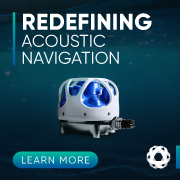
Scientists Discover New Hydrothermal Vents and Possible New Species in the Gulf of California
22.11.2021
A multidisciplinary team of scientists from Mexico and the U.S. discovered new hydrothermal vents and six possible new animal species during a 33-day expedition off the coast of La Paz on Schmidt Ocean Institute's research vessel Falkor. The underwater robot ROV SuBastian was used to explore and sample vents emitting fluids at temperatures up to 287°C (549°F) along with the unique animal communities inhabiting this extreme environment. ROV SuBastian additionally captured stunning imagery of the seafloor including hydrothermal mirror pools, calcite spires, and iridescent blue scale worms.
The largest of the new vent mounds, named Maija awi, sits midway between the JaichaMaa ‘ja’ag vent field, discovered by the same team during Schmidt Ocean Institute’s 2018 R/V Falkor expedition, and the Auka vent field, discovered during an expedition by the Monterey Bay Aquarium Research Institute (MBARI) in 2015.
Additional hydrothermal vents were found south of JaichMaa ‘ja’ag, and are named ’Melsuu. The names of the vent fields and many of the individual mounds and chimneys derive from the languages of the indigenous Yuman peoples of Baja California. Maija awi was named after the divine serpent of water in the creation myth of the Kumiai people, as its shape resembles a dragon. ‘Melsuu means “blue'' in the Kiliwa dialect of the Yuman people and was named for the large number of iridescent blue worms that were found amongst the vents.

The expedition focused on tectonic processes and mapping, heat flow and geophysics of hydrothermal vents, and biology including microbes. The hydrothermal vents are located in the Pescadero basin and are unique both in their chemistry and appearance to other known hydrothermal vents, as they are the only ones currently observed to emit clear fluids as opposed to dark, smokey fluids associated with iconic “black smoker” vents. Scientists collected vent fluid to examine the chemical make-up and measured heat flow around the vents to determine if they are connected beneath the earth’s surface through one large reservoir or were created through separate fissures in the earth’s crust.
“Between the 2018 and 2021 Gulf of California expeditions, we have covered an unprecedented area of nearly 20,000 square kilometers, which is about 1/8th of the total surface area of the Gulf of California,” said co-Principal Investigator Dr. Ronald Spelz-Madero of the Autonomous University of Baja California. “Studying the relatively rapid rate at which the Gulf of California is forming expands our knowledge of how continental margins form, the places where most people live today.”

During this expedition six or more possible new species, including polychaetes, arrow worms, crustaceans, molluscs and roundworms were found, along with ten known species not previously found in the Pescadero Basin. “There appear to be differences in which vent animals dominate these different hydrothermal features,” said co-Principal Investigator Dr. Victoria Orphan. “The sites to the south had the highest density of blue scale worms, while others appeared to be more densely colonized by chemosynthetic anemones or tube worms.”
“Our team of scientists and engineers has been studying faulting, volcanism, and hydrothermal venting in the southern basins of the Gulf of California for a full decade,” said Chief Scientist David Caress, from MBARI. “This expedition has simultaneously built on our past exploration of the Alarcon and Pescadero basins and enabled further exploration in the adjacent but poorly known Farallon and Carmen Basins.”
The team was led by Drs. David Caress of MBARI, Ronald Spelz-Madero from the Autonomous University of Baja California (UABC), Raquel Negrete-Aranda of the Ensenada Center for Scientific Research and Higher Education (CICESE), and Victoria Orphan of the California Institute of Technology, in collaboration with scientists from the University of California Davis, Occidental College, Scripps Institution of Oceanography, and Oregon State University.
The expedition marks the end of the research vessel Falkor’s tenure with Schmidt Ocean Institute before the organization transitions to its new ship, the R/V Falkor (too). “This was a spectacular finale to an incredible decade of science conducted on board R/V Falkor, which has been used to support international, interdisciplinary collaborations that shed light on the still-unknown deep sea to better characterize and understand our Ocean in a changing climate,” said Schmidt Ocean Institute Executive Director Dr. Jyotika Virmani. “We look forward to continuing this mission onboard our new research vessel Falkor (too), and contributing to global initiatives such as Seabed 2030, and the U.N. Decade of Ocean Science for Sustainable Development.”
Location: Mexico











